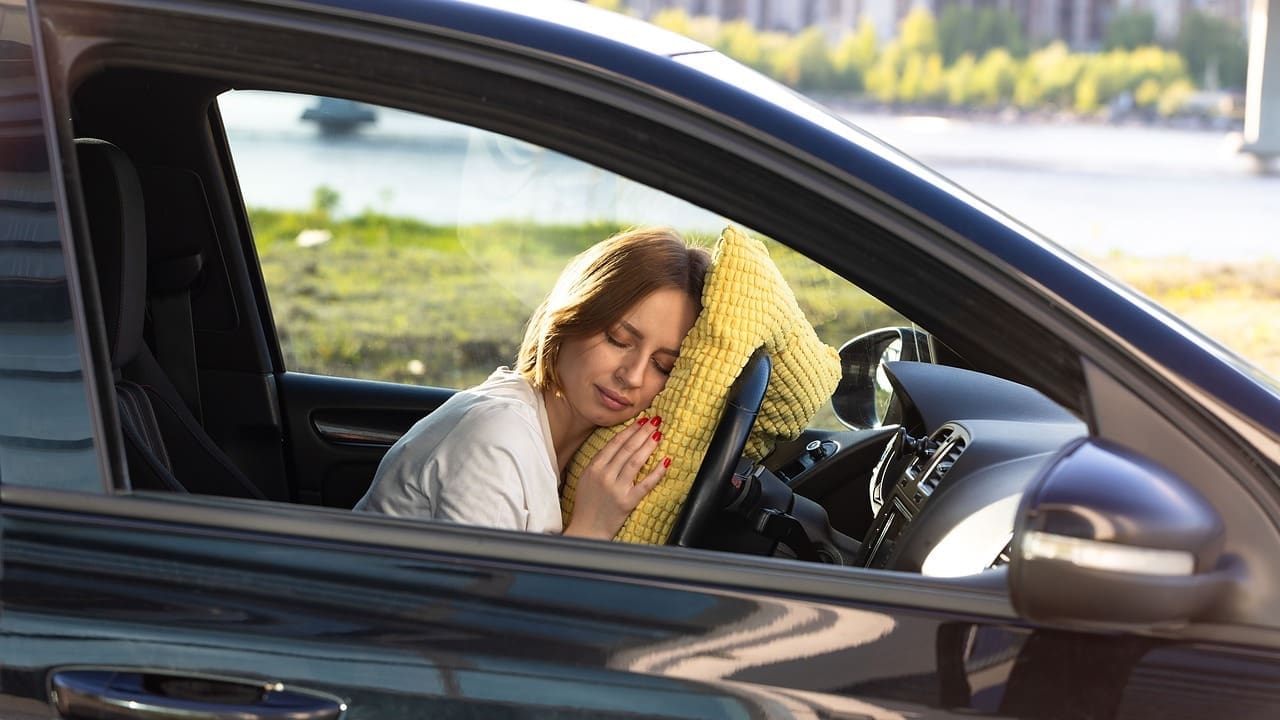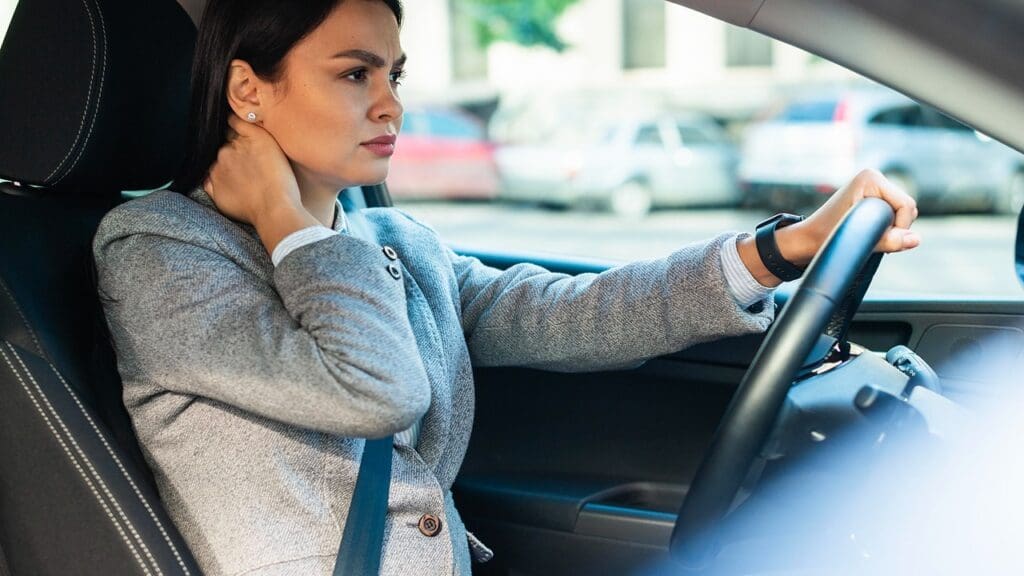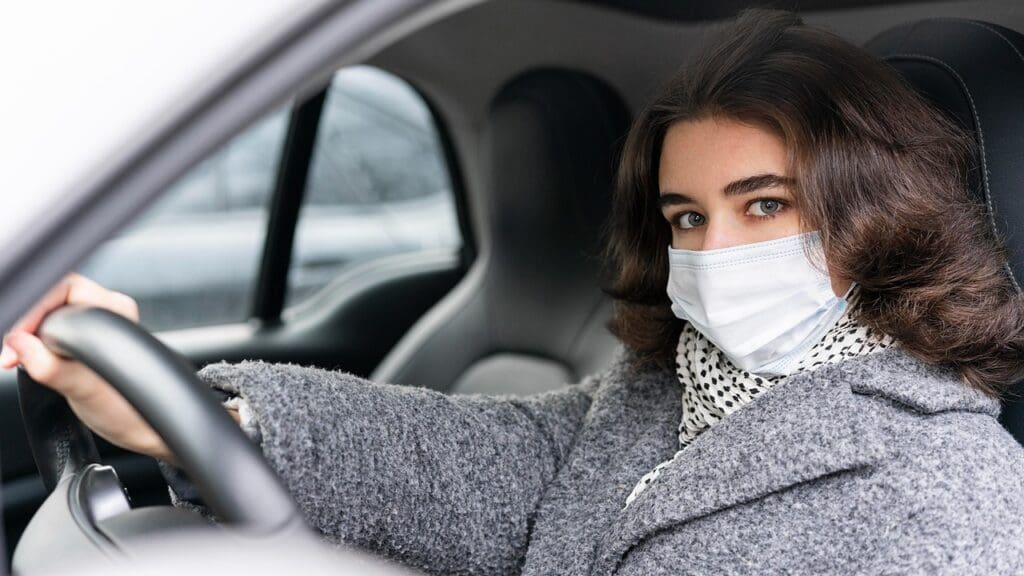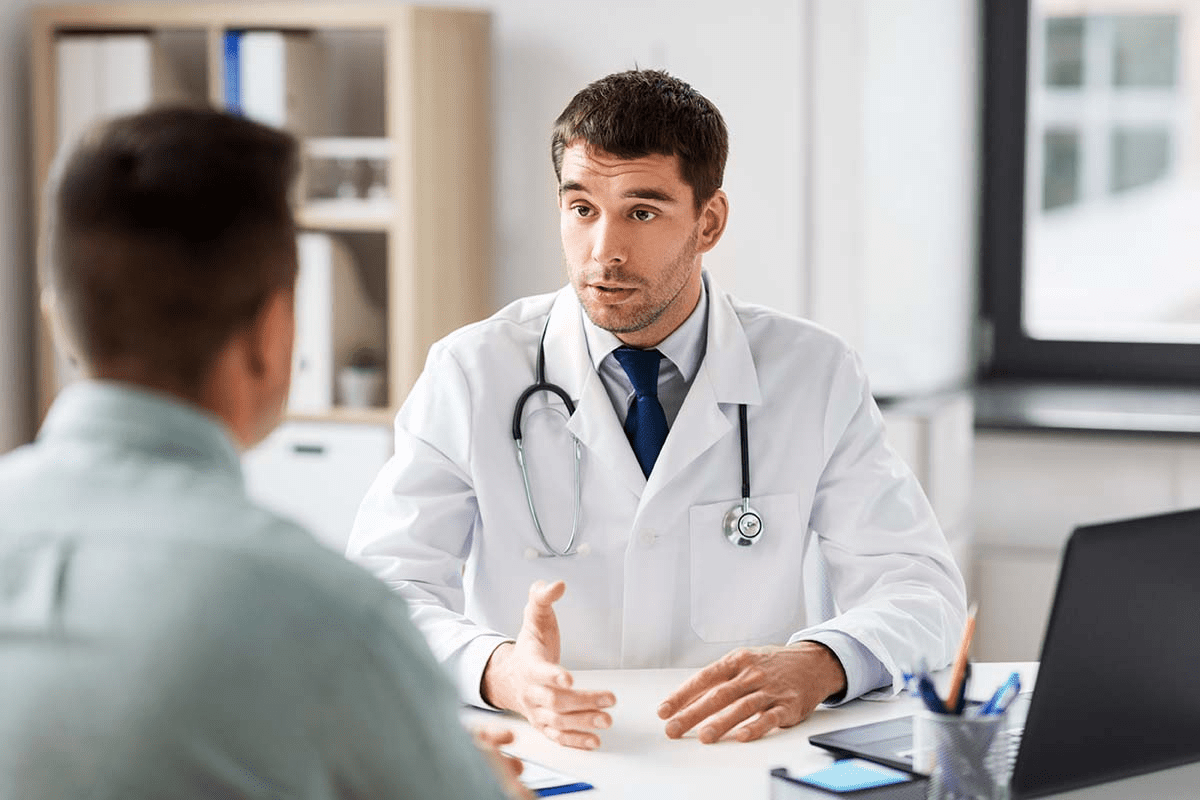Last Updated on November 27, 2025 by Bilal Hasdemir

Patients often ask when they can safely drive again after chemotherapy. At Liv Hospital, we know how important it is to check the risks and things to think about when driving after treatment.
Chemotherapy can lead to fatigue, nausea, and trouble focusing. These side effects can make driving unsafe. We tell patients to think carefully about whether they’re ready to drive again.
We focus on patient care, helping them get back to daily life safely. This includes driving. We guide patients through the challenges of chemotherapy and support their care choices.
Key Takeaways
- Chemotherapy side effects can impact driving safety.
- Patients should assess their readiness to drive after treatment.
- Liv Hospital provides personalized guidance on resuming daily activities.
- Safety and tailored aftercare are our top priorities.
- We support patients in making informed decisions about their care.
The Effects of Chemotherapy on Driving Capabilities
When thinking about driving after chemotherapy, it’s important to know how the treatment affects you. Chemotherapy can cause many side effects that might make driving unsafe.
Common Side Effects That Impact Driving Safety
Chemotherapy can make you feel very tired, nauseous, and blur your vision. It can also make it hard to focus. Fatigue can slow down your reaction time and judgment. Nausea and vomiting can distract you while driving, which is dangerous.
Cognitive and Physical Limitations After Treatment
Chemotherapy can also change how you think, causing memory problems and trouble concentrating. Physically, it can cause nerve damage, making it hard to drive safely.
How Side Effects Vary Between Patients
How chemotherapy side effects affect you can vary a lot. The type of treatment, your health, and other conditions you have can all play a part.
| Side Effect | Impact on Driving | Variability Between Patients |
|---|---|---|
| Fatigue | Slowed reaction times | High variability |
| Nausea/Vomiting | Distraction, possible loss of control | Moderate variability |
| Cognitive Changes | Impaired judgment, concentration | High variability |
Knowing these factors is key to figuring out when it’s safe to drive again after chemotherapy.
How Long After Chemotherapy Can I Drive?
Whether you can drive after chemotherapy depends on several things. This includes the type of chemotherapy you got. Usually, doctors tell patients not to drive right after treatment. This is because some side effects can make it hard to drive safely.
Immediate Post-Treatment Recommendations
Right after chemotherapy, it’s best not to drive yourself home
Typical Recovery Timelines
How long it takes to recover varies from person to person. Some might feel better in just a few days. Others might take longer. The type and amount of chemotherapy you got also affects how soon you can drive again.
Factors That Influence Safe Driving Resumption
Several things affect when it’s safe to drive after chemotherapy. These include:
- The specific chemotherapy regimen and its side effects
- The patient’s overall health and presence of other medical conditions
- The use of other medications that could impair driving
It’s very important for patients to talk to their healthcare provider. They can give advice based on your specific situation. This way, you’ll know when it’s safe to start driving again.
Assessing Your Personal Readiness to Return to Driving
Deciding when it’s safe to drive again after chemotherapy is a big decision. You need to check if you can drive safely. This means looking at your physical and mental health.
Self-Evaluation Checklist for Driving Safety
Here are things to think about when you’re ready to drive:
- Reaction Time: Can you quickly respond to surprises on the road?
- Physical Strength: Do you have enough strength to drive safely, like steering and braking?
- Cognitive Function: Can you focus and make good decisions while driving?
- Vision: Is your vision good enough to drive, including checking mirrors and blind spots?
- Medication Side Effects: Are any medication side effects affecting your driving?
We suggest keeping a log of your daily abilities and challenges. This will help you talk to your healthcare provider.
Professional Driving Assessments: When They’re Needed
At times, a professional driving check might be needed. This is true if you’ve seen big changes in your thinking or body during treatment. Occupational therapists who focus on driving can give a detailed check-up.
Warning Signs That You Should Wait Longer
If you notice any of these, it’s best to wait longer before driving:
- Dizziness or fainting spells
- Severe fatigue
- Significant cognitive fogginess or memory issues
- Severe pain or discomfort that could distract you while driving
Your safety and the safety of others on the road are most important.
Transportation Planning for Chemotherapy Appointments
Patients often wonder how to get to their chemotherapy appointments. Getting to these sessions is a big part of cancer care. It’s something patients need to think about.
Can You Drive Yourself to Chemo Appointments?
Whether you can drive to chemotherapy depends on a few things. This includes the type of treatment and any side effects. For some, driving might be okay, but only if they’re not feeling too bad.
First Treatment vs. Subsequent Sessions
For the first treatment, it’s best to have someone else drive you home. You might not know how you’ll feel right away. But for later sessions, if you’re feeling okay, you might be able to drive yourself. Just make sure you’re ready to drive safely.
Alternative Transportation Resources and Options
If driving yourself isn’t a good idea, there are other ways to get to your appointments. You could:
- Ask a friend or family member for a ride
- Use public transportation
- Look into non-emergency medical transportation services
- Try ride-sharing services
Looking into these options can make sure you get to your appointments safely. It can also reduce your stress.
Driving After Radiation Therapy and Other Cancer Treatments
When you’re going through cancer treatment, knowing how radiation affects driving is key. Radiation therapy can cause different side effects than chemotherapy. Also, how long it takes to recover can vary a lot between people.
Can You Drive After Radiation Treatment?
Whether you can drive after radiation treatment depends on a few things. These include where and how much radiation you got, and your overall health. Some people might feel too tired, have skin issues, or other problems that could affect driving.
We suggest talking to your doctor about your situation. They can tell you when it’s okay to start driving again.
Differences Between Chemotherapy and Radiation Recovery
Recovering from radiation therapy is different from recovering from chemotherapy. Chemotherapy can make you feel sick and cause hair loss. But radiation therapy might make your skin itch or make you very tired.
Knowing these differences helps you figure out when you can drive safely. We’ll look into these differences more to help you make good choices.
Special Considerations for Combined Treatment Protocols
If you’re getting both radiation therapy and chemotherapy, or surgery, driving safely is even more important. Getting both treatments at once can make side effects worse. It’s vital to talk to your healthcare team about how your treatments might affect your driving.
By understanding how radiation and other cancer treatments impact driving, you can make smart choices about getting around. This ensures your safety on the road.
Medication Effects Beyond Chemotherapy Drugs
When you’re going through cancer treatment, it’s key to know how different meds can affect driving. Not just chemotherapy, but other drugs too. They help manage symptoms and side effects, but can also impact your driving.
Pain Medications and Their Impact on Driving
Pain meds, like opioids, can make you feel sleepy, dizzy, and slow to react. It’s important to stick to the dosage and watch out for side effects. A study showed these meds can raise the risk of car accidents by up to 50%.
Sedatives, Anti-Nausea Drugs, and Other Supportive Medications
Sedatives and anti-nausea drugs help with chemotherapy side effects. They can make you feel sleepy, affect your thinking, and coordination. Always read the label and talk to your doctor about any worries.
Understanding Medication Labels and Warnings
Medication labels have important info on side effects and warnings. It’s vital to read and understand these labels for safe driving. Some meds might tell you not to drive or use heavy machinery until you know how they affect you.
To keep yourself and others safe on the road, know the meds you’re taking and how they might affect driving. If you’re unsure, talk to your doctor for advice.
Legal and Insurance Considerations During Cancer Treatment
Driving during cancer treatment is not just about health. It also involves legal and insurance matters. Patients need to understand these to follow rules and keep their insurance in order.
Medical Reporting Requirements for Drivers
Patients with cancer may need to tell their state about their health. Not doing so can lead to fines. It’s wise to check with local officials about what’s needed.
Insurance Coverage Questions
Cancer treatment can change how insurance works. Patients should look at their policies closely. Some insurance plans have rules for driving with certain health issues.
Potential Liability Issues to Consider
If a patient gets into an accident while driving on meds, they could face legal trouble. It’s key to know the law and take steps to avoid accidents. Important things to think about include:
- Knowing how meds affect driving
- Listening to doctors about driving
- Talking openly with insurance about health
Knowing about legal and insurance issues helps patients manage their treatment. It also helps them avoid legal and financial problems.
Post-Chemotherapy Care at Home to Improve Recovery
Recovering from chemotherapy needs a full plan that includes rest, drinking water, and watching for symptoms at home. Patients must focus on their health and safety, like when they drive.
Rest and Hydration Strategies
Getting enough rest and drinking water is key to getting better. Patients should aim for good sleep and drink the right amount of fluids. They should also avoid hard work and let their bodies heal.
Monitoring Symptoms That Could Affect Driving
It’s important to watch for symptoms that might make driving risky. Patients should notice any changes in how they feel or think, like dizziness or trouble focusing. Keeping a symptom journal can help track these changes and give important info to doctors.
Activities to Restore Cognitive and Physical Function
Doing activities that help the mind and body get better is very helpful. Gentle exercises like walking or yoga can boost strength and flexibility. Also, doing puzzles can help the mind heal. Start with small, easy activities and slowly do more as you get stronger.
By focusing on rest, drinking water, watching for symptoms, and doing activities that help, patients can get better faster. They can also feel more confident and safe when driving.
Working With Your Healthcare Team on Driving Decisions
Understanding your health status is key to making safe driving decisions after chemotherapy. Your oncologist and healthcare team can guide you. They know your recovery progress and any driving risks.
Questions to Ask Your Oncologist About Driving
It’s important to ask the right questions about driving safety. Ask, “How will my chemotherapy treatment affect my ability to drive?” or “Are there specific side effects I should watch out for that could impact my driving?” Being proactive in seeking this information can significantly reduce risks.
When to Request Medical Clearance
Medical clearance is needed after some treatments or if you’ve had big side effects. Ask your oncologist when to come in for a check-up to see if you’re fit to drive. This ensures you’re safe on the road.
Involving Family Members in Safety Discussions
Talking to family members about driving safety can help. They can watch your condition and provide transport when needed. This keeps you and others safe.
Working with your healthcare team and involving family can help you make safe driving choices. You can balance independence with safety.
Conclusion: Finding Balance Between Independence and Safety
Driving after chemotherapy is complex. It’s key to balance wanting to be independent with keeping everyone safe. Patients need to think about their own safety and the safety of others.
We’ve looked at how chemotherapy affects driving skills. We’ve also talked about checking if you’re ready to drive again and planning how to get around during treatment. The effects of medication, legal and insurance issues, and the role of healthcare teams were also covered.
Driving safely after chemotherapy needs careful thought. Patients should know their limits and make choices that keep them safe. We suggest patients talk to their healthcare team to find a balance. This way, they can stay safe and independent during their recovery.
FAQ
References
- WAV Compare Blog: https://blog.wavcompare.com/driving-and-cancer/
- CentraCare: https://www.centracare.com/app/files/public/fc758ad7-a956-4200-be12-80f7c26ed561/cancer-wellness-guide-driving-and-cancer.pdf
- WAVS GB (UK): https://www.wavsgb.com/help/helpful-articles/driving-with-cancer/
- Cancer Council (Australia): https://www.cancercouncil.com.au/cancer-information/coping-with-a-diagnosis/work-and-cancer/for-workers/decisions-about-working/
- Oncology Nursing News: https://www.oncnursingnews.com/view/should-your-patient-be-driving








